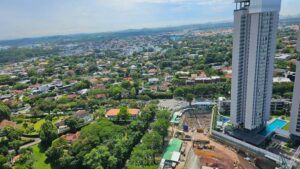
Bitcoin live casino roulette platforms incorporate various remote sensing technologies that detect player interactions, monitor gaming environments, and facilitate real-time communication between participants and dealers. From a camera’s lens to the digital signals flowing through cables, these sensors get their information from many kinds of tech. check crypto.games/roulette/bitcoin for the best bitcoin roulette utilise sophisticated sensing infrastructure to deliver immersive gaming experiences across global networks.
Camera streaming infrastructure
- High-definition camera networks – Multiple strategically positioned cameras capture wheel movements, ball trajectories, and dealer actions simultaneously with motion detection sensors that automatically adjust focus and zoom levels based on game phases
- Multiple angle coverage – Advanced setups include overhead shots for clear number visibility, side angles for ball tracking, and close-up views for result verification with automated switching systems coordinating between different feeds
- Infrared sensor support – Supplement standard cameras during low-light conditions, ensuring consistent video quality regardless of studio lighting variations through enhanced night vision capabilities
- Real-time compression systems – Streaming infrastructure compresses video data while maintaining quality standards necessary for accurate result verification, balancing bandwidth requirements with visual clarity
- Adaptive encoding algorithms – Adjust to individual player connection speeds with buffer management systems, preventing lag during critical game moments like ball drops and final results.
Player interaction detection
Player interaction detection uses remote sensing technologies to track device inputs, such as touchscreens, mouse activity, and keyboard usage. You move your hands, and the system understands your bets, letting you play easily on screen. They easily tell apart a real bet from a simple, accidental touch. On supported devices, eye-tracking tools monitor where players direct their attention during gameplay. Thanks to this information, interfaces improve, and we catch problem gambling habits more readily. Facial scanning confirms who’s playing and also checks their feelings after a game. Voice control lets players engage verbally with both dealers and fellow game participants. Voice commands become digital actions with natural language processing. This makes gameplay super smooth. Advanced background noise filtering improves recognition accuracy in busy or noisy environments.
Geographic location systems
- GPS and IP-based positioning – Determines player geographical positions for regulatory compliance purposes, verifying players’ access to games from legally permitted jurisdictions while blocking restricted regions
- Cellular tower triangulation – Provides backup location verification when GPS signals prove unreliable, offering secondary confirmation of player geographic positioning.
- VPN detection algorithms – Identify attempts to mask true locations, maintaining regulatory compliance across different territories through advanced network analysis techniques
- Time zone cross-referencing – Analyses location data with local time stamps, detecting inconsistencies that might indicate location spoofing attempts through temporal pattern recognition.
Bitcoin live casino roulette remote sensing abilities span multiple technological domains, from camera systems and player interaction detection to geographic verification and network monitoring. These features show up mostly in the backbone of streaming services, the parts that make gadgets play nice, and the rules keeping everything legal. When game makers weave various sensor devices into play, virtual worlds become super real. This complex interplay of tech also safeguards competitive integrity and player security across vast international gaming platforms.





